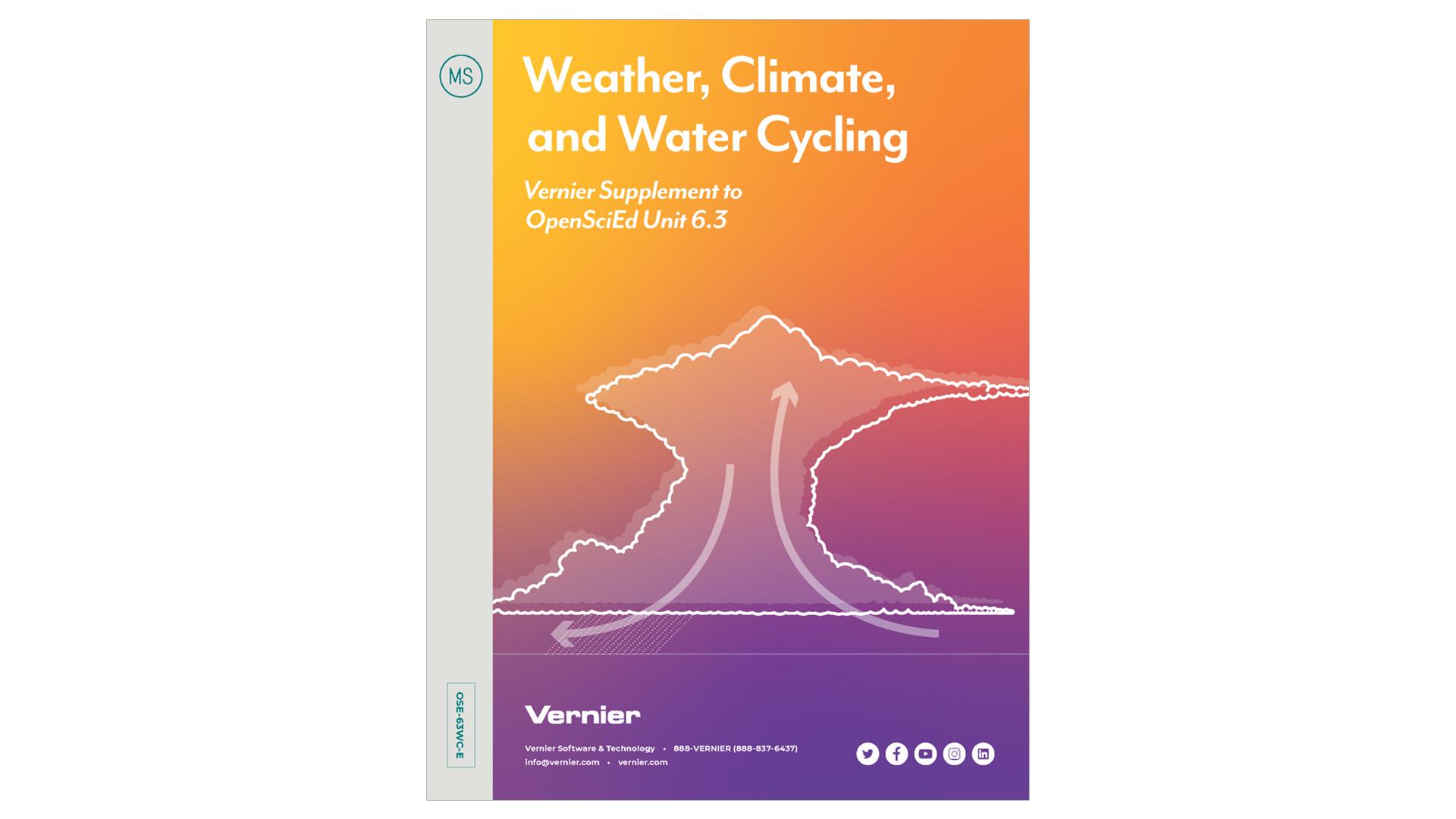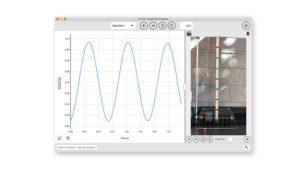Requirements
Our partnership with OpenSciEd gives middle school teachers access to free high-quality instructional materials that integrate our data-collection technology and align with the Next Generation Science Standards.
Follow the steps below to access your free PDFs and editable Google Docs for each lesson.
- Download the complete unit from OpenSciEd.
- Add the Weather, Climate and Water Cycling Supplement to your Vernier shopping cart.
- Complete the order. You will receive an email with a download link.
- Follow the link to download the Weather, Climate and Water Cycling Supplement.
- Swap in the enhanced data-collection lessons for the OpenSciEd lessons.
Lessons
There are 22 lessons in the full OpenSciEd Unit 6.3.
3 lessons are enhanced with Vernier data-collection technology—included in the Vernier Supplement to Weather, Climate and Water Cycling.
This unit uses Vernier Graphical Analysis™, two Go Direct® Temperature Probes per group, a Go Direct® Weather System, and a Go Direct® Light and Color Sensor.
|
Lessons |
|
Sensors Used |
|
|
Lesson 1: What causes this kind of precipitation event to occur? |
|
|
|
|
Lesson 2: What are the conditions like on days when it hails? |
|
|
|
|
Lesson 3: How does the air higher up compare to the air near the ground? |
|
|
|
|
Lesson 4: Why is the air near the ground warmer than the air higher up? |
|
Go Direct®
Temperature Probe
(1 per group)
Go Direct® Light and Color Sensor (1 per group)
Go Direct® Weather System (1 per group) |
|
|
Lesson 5: What happens to the air near the ground when it is warmed up? |
|
|
|
|
Lesson 6: How can we explain the movement of air in a hail cloud? |
|
|
|
|
Lesson 7: Where did all that water in the air come from, and how did it get into the air? |
|
Go Direct®
Temperature Probe
(2 per group)
Go Direct® Light and Color Sensor (1 per group)
Go Direct® Weather System (1 per group) |
|
|
Lesson 8: What happens to water vapor in the air if we cool the air down, and why? |
|
|
|
|
Lesson 9: Why don’t we see clouds everywhere in the air, and what is a cloud made of? |
|
|
|
|
Lesson 10: Why do clouds or storms form at some times but not others? |
|
|
|
|
Lesson 11: Why don’t water droplets or ice crystals fall from the clouds all the time? |
|
|
|
|
Lesson 12: What causes more lift in one cloud versus another? |
|
Go Direct®
Temperature Probe
(2 per group)
Go Direct® Light and Color Sensor (1 per group)
Go Direct® Weather System (1 per group) |
|
|
Lesson 13: Why do some storms produce (really big) hail and others don’t? |
|
|
|
|
Lesson 14: What causes a large-scale precipitation event like this to occur? |
|
|
|
|
Lesson 15: What happens with temperature and humidity of air in large storms? |
|
|
|
|
Lesson 16: How do warm air masses and cold air masses interact along the boundaries between them? |
|
|
|
|
Lesson 17: Is there a relationship between where the air is rising and where precipitation falls? |
|
|
|
|
Lesson 18: How can we explain what is happening across this storm (and other large-scale storms)? |
|
Lesson 19: Are there patterns to how air masses move that can help predict where large storms will form? |
|
|
|
|
Lesson 20: How do oceans affect whether a place gets a lot or a little precipitation? |
|
Lesson 21: Why is there less precipitation further inland in the Pacific Northwest than further inland from the Gulf Coast? |
|
|
|
|
Lesson 22: How can we explain differences in climate in different parts of the world? |


